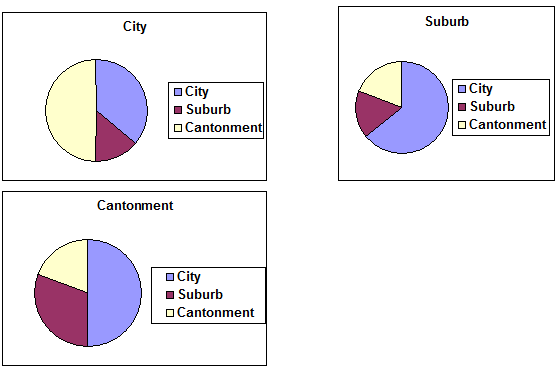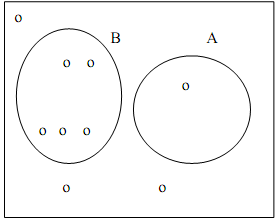Reference no: EM13905917
Part -1:
Case 1. A survey was conducted among the residents of Pune City, its suburbs and the Pune Cantonment area. The following three pie diagrams show their respective preferences for living in City, Suburb and cantonment.

Case 2.
Suppose you are doing market research for a company that sells automotive accessories. You are interested in the types of cars driven by customers of a particular mall. On one particular day, you count the following types of cars in the lot:
------------------------------------------------------------------------------------------------------
Family car Economy car Economy car Utility van
Family car Wagon Wagon Wagon
Sports car Economy car Utility van Family car
Pickup truck Utility van Sports car Utility van
Wagon Wagon Wagon Family car
Pickup truck Utility van Sports car Utility van
Economy car Economy car Utility van Sports car
Utility van Sports car
-----------------------------------------------------------------------------------------------------
Questions:
1. Do you see similar preference distribution in the three groups of residents in Case Study 1? ?
2. In Case Study 1,Which residents are most happy about where they are actually living? Explain
3. In Case Study 1, Which residents are the least happy about where they are actually living? Explain
4. In Case Study 2, Prepare appropriate frequency distribution
5. In Case Study 2, Represent above data by suitable graph
Part -2:

Questions
1. In the above Venn diagram the nine sample points shown are equally likely.
State following probabilities:
P(A), P(B), P(A ∪ B)
2. In the above Venn diagram the nine sample points shown are equally likely.
Are A and B mutually exclusive and exhaustive? Justify your answer.
3. A financial record of two companies A and B are examined to determine whether each company showed a profit (P) or not (N) during the last financial year. Is this a random experiment? Justify your answer.
4. A financial record of two companies A and B are examined to determine whether each company showed a profit (P) or not (N) during the last financial year. List the simple events associated with this experiment.
5. A financial record of two companies A and B are examined to determine whether each company showed a profit (P) or not (N) during the last financial year.Suppose P(A shows profit) = 0.8 and P(B shows profit) = 0.2, what is the probability that either of the company shows profit.?